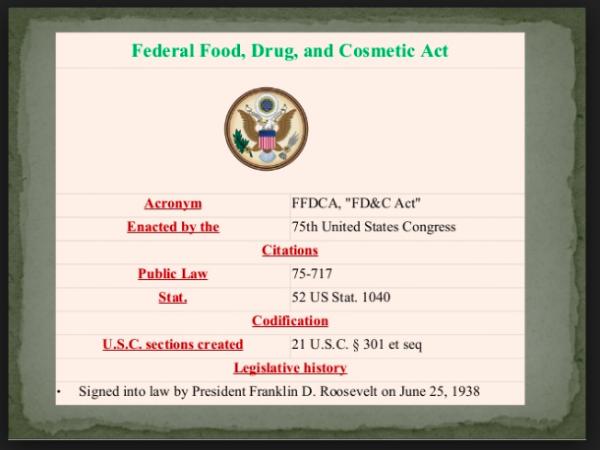A recent New York Times editorial "Cosmetics Safety Needs a Makeover" calls for better FDA regulation of the ingredients found in cosmetics.
While this may be an admirable endeavor, the intended goal of improving cosmetic safety can only be met if regulations are based on sound science. Although it is not unreasonable for the Times Editorial Board to call for an update of FDA regulations of cosmetics (they were last updated in 1938), the board makes a common error in evaluating toxicology -- the omission of dose (exposure) in determining the magnitude of risk, if any, of the chemical in question.
In the absence of information about exposure, almost any chemical can be made to sound scary and harmful, when, in fact, its risk may be minuscule or even nonexistent. Following are some examples of chemicals that were featured in the editorial.
1. Formaldehyde

Image (for formaldehyde, lead and toluene): Tony Cenicola, The New York Times
Although the statement above is technically true, it sends a misleading and incorrect message -- that trace amounts of formaldehyde in cosmetics will give you cancer. It will not.
- We consume small amounts of formaldehyde every day. The chemical is found naturally in a wide variety of foods, such as fruit, vegetables, seafood, and meat. Our bodies are capable of rapidly detoxifying formaldehyde within minutes.
- Not only can we detoxify formaldehyde, but we actually need it. Formaldehyde is an essential building block of DNA, which means it is required for all life - from humans down to bacteria. To ensure that there is adequate formaldehyde to make DNA living organisms make it using a metabolic process called the "one-carbon pathway." (1) In this process, formaldehyde is synthesized, used and then detoxified. It has been estimated that 50,000 mg - tens of thousands of times more than we would ever encounter from cosmetics or apple juice - of formaldehyde is turned over daily in the human body.
2. Lead
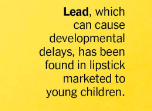
It is indisputable that lead is a neurotoxin. But do trace quantities of lead in cosmetics present a real risk to either adults or children? Historical data on children's blood lead levels (BLL) suggest that the risk, if any, is small. With the advent of unleaded gasoline and the ban on lead paint, blood levels of the element have markedly decreased in the past 60 years.
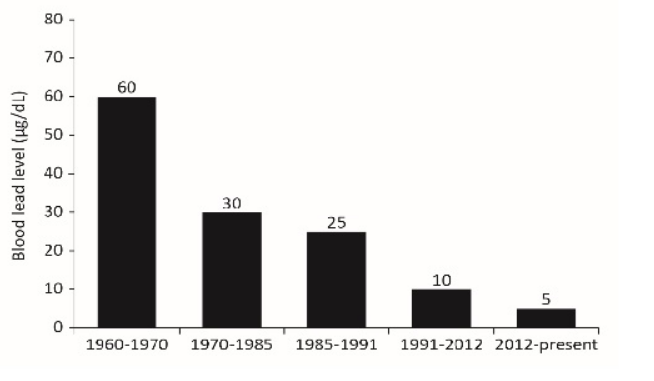
Blood levels in children have declined steadily since 1960. Source: Agency for Toxic Substances and Disease Registry
Additionally, my colleague Alex Berezow, has written that even during the Flint "water crisis" average BLLs were lower than they were at any time during the years 2006-2012.
And if there has been any increase in BLL due to lipstick that it is marketed to children, one of the products mentioned in the Times, it is difficult to find anything of the sort when examining the percentage of children with elevated lead levels between 1997-2006 (Figure 1).
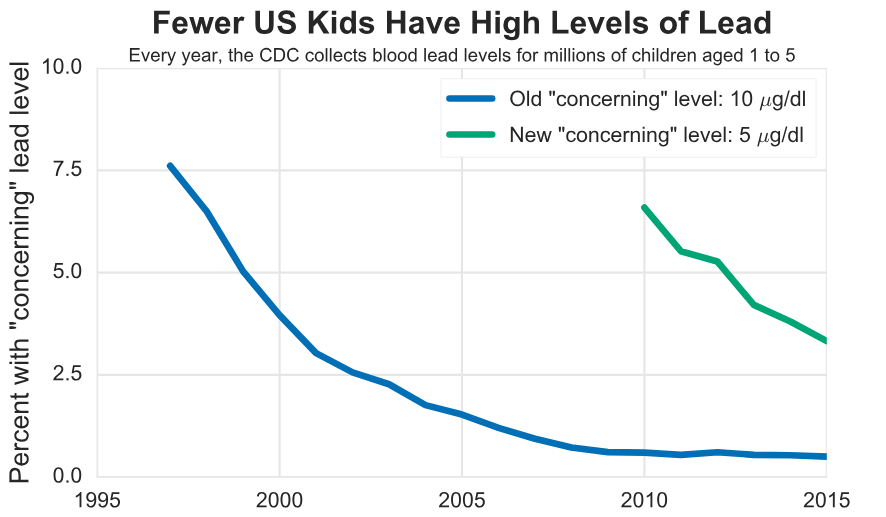
Figure 1: Percentage of children aged 1-5 with "concerning" blood lead levels. 
3. Toluene
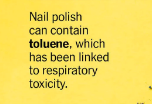
Toluene is a very common solvent, which is used routinely in both chemistry labs as well as manufacturing facilities. It is also a component of gasoline. Although its chemical structure and properties are nearly identical to those of benzene, it has largely replaced benzene, which is a known carcinogen. Two common consumer uses of toluene are as a solvent (paint stripper) or a component of glue. "Glue sniffing" (inhalant abuse) usually involves the recreational inhalation of toluene fumes. Toluene is also used (in combination with other solvents) as a nail polish solvent.
It is here where the Times fails to make the distinction between occasional and occupational use of the chemical. When used in a chemistry lab toluene is handled within a negative pressure fume hood to minimize exposure to the vapor. While chemists will often detect small quantities of toluene, which has a distinctive odor, this is not a concern for us. On the other hand, workers at nail salons have no such protection. Nor do paper masks, which reduce exposure to dust and particular matter, protect workers from toluene vapors, which can move through such masks just like air.
While the Times claims, "nail polish can contain toluene, which has been linked to respiratory toxicity," it fails to make the distinction between regular exposure to the solvent. Salon workers, especially those who work in poorly ventilated locations, may very likely be exposed to dangerous levels of the solvent. But for someone who applies nail polish every two weeks the risk of harm is little or none. Once again, by failing to distinguish between occupational and occasional use of a chemical the Times has ignored exposure.
4. The real scare is cancer, but this is unfounded.
The underlying message is most chemical scares is that we a swimming in an "ocean of chemicals" and that this is contributing to soaring rates of cancer. Comments following the article makes this clear.
"I suspect that the toxic chemicals in makeup are contributing to the incidence of cancer in women."
"I know this is absurdly anecdotal but I know three very young people -- all under the age of 40 -- afflicted with aggressive cancers. Two of them are dead and the other's body is ravaged by the treatments. All three are women. I wonder what the statistics are on new incidences of cancer by gender for people ages of the 30-40 age group."
"Why are cancer rates soaring? (Not only because of better detection...)
It is difficult to blame chemicals for the "soaring" rate of cancer; the rate is not soaring. The incidence of cancer (Figure 2) has held steady for decades. (2,3)
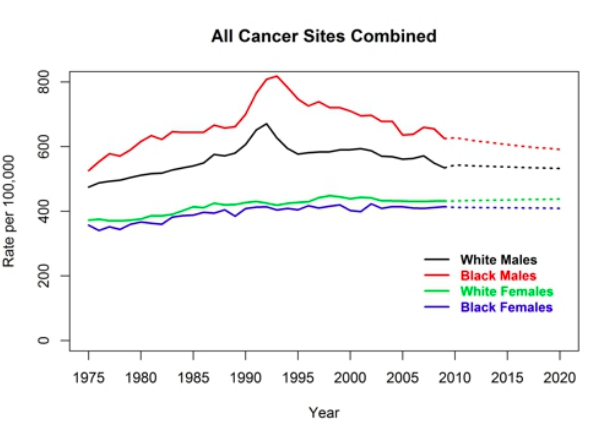
Figure 2. Actual and Projected Cancer Incidence Rates, United States, 1975 to 2020. Source: CDC
While the Times editorial mey be well-meaning this is not enough. No one would argue against safer cosmetics (or any other product), but attempting to ensure safety without having in place the correct science to do so can only lead to a vast, expensive, and ultimately useless effort, which may very well do more harm than good.
NOTES:
(1) Burgos-Barragan, G., Wit, N., Meiser, J., Dingler, F. A., Pietzke, M., Mulderrig, L., … Patel, K. J. (2017). Mammals divert endogenous genotoxic formaldehyde into one-carbon metabolism. Nature, 548(7669), 549–554. doi:10.1038/nature23481
(2) It is important to distinguish between cancer deaths and the incidence (number of cases) of the disease. The former has been dropping steadily because of improvements in detection and treatment. The decrease in cancer deaths tells us little or nothing about the role of environmental chemicals in causing cancer. The incidence may or may not reflect individuals' chemical exposure.
(3) Although the graph show a large increase in prostate cancer in the early 1990s, this is an artifact, not a real increase. The apparent increase was caused by the introduction of the PSA text in 1990. Prostate cancer
